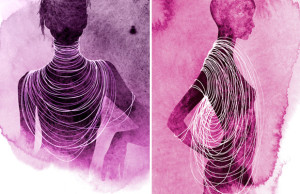Changing Sex, Changing Gender

Written by Noach Dzmura. Noach, a first-time Jewrotica writer and community educator, is a 2007 graduate of the Richard S. Dinner Center for Jewish Studies of the Graduate Theological Union in Berkeley. The recipient of the 2006–07 Haas–Koshland Award, Noach was privileged to teach about Gender Variance in Mishnah during last year’s World Pride Celebration in Jerusalem. He can be reached at [email protected]. This article has been reprinted with permission from the journal Sh’ma.
 A small number of people change sex. Many more change gender. “Transgender” refers to gender-change with (or without) sex-change. Gender-change is to identity what sex-change is to a body. Identity changes are easier to acquire and (often) harder to recognize. In some states a judge may order gender-change when no sex-change has been performed. This means that a female body dressed in male clothing can be, by order of the court, as much a man as Avraham Avinu or God Himself. So, while the gay community struggles for same-sex marriage, two same-sex bodies may legally marry if one of them is transgender. In addition, when one partner in a heterosexual marriage changes sex, the couple may remain together — in a legal, same-sex marriage.
A small number of people change sex. Many more change gender. “Transgender” refers to gender-change with (or without) sex-change. Gender-change is to identity what sex-change is to a body. Identity changes are easier to acquire and (often) harder to recognize. In some states a judge may order gender-change when no sex-change has been performed. This means that a female body dressed in male clothing can be, by order of the court, as much a man as Avraham Avinu or God Himself. So, while the gay community struggles for same-sex marriage, two same-sex bodies may legally marry if one of them is transgender. In addition, when one partner in a heterosexual marriage changes sex, the couple may remain together — in a legal, same-sex marriage.
There is a similar blindness to “transgender” in Jewish law and society. While there are halakhic responsa and denominational statements concerning sex-change, none concern gender-change. The law passes over gender variance like the angel of death passed over Jewish households in Egypt; perhaps with the same salubrious effects. We live among you, daven with you, but we are in exile. To survive, we must be visible in relation to the binary. While law passes over gender difference, custom is unable to change; it must. If there are no roles for those of us who are transgender to play as transgender Jews who may or may not also be men or women, the Jewishness of our lives will be lost.
The fundamental binary — what is a man or a woman — is crumbling under benign neglect, and we fail to notice. One can only wonder at this gray area in the law and its disconnection from the heteronormative ethic. “Transgender” challenges Judaism more profoundly than feminism or homosexuality. Feminists and homosexuals argue for separate-but-equal status; transgender persons argue that sex and gender are no longer “real enough” categories to classify humans. Everything a person does to be Jewish is based on categories, then, that don’t work.
Mishnah Androgynos is a rabbinic text addressing the exceptional case of a hermaphrodite human (a person with two complete sets of genitals, one male and one female). Androgynos prescribes a legal alternative to the one-sex-one-gender binary system. In this alternative, an individual regularly appears in the garb of one gender even though only half of the individual’s body maps to that gender’s norms. The hermaphrodite, then, is directly enabled by the community to function as a unique member. A similar adaptation might be useful in communities working to include transgender Jews.The hermaphrodite’s gender is always ambiguous. S/he appears male but possesses a female “half” and sometimes performs feminine obligations. Rather than reacting to a “man” performing female obligations as a transgression, community members must recognize the hermaphrodite’s duality as both man and woman. Though the hermaphrodite in other instances is said to have a single gender, legal discussion concerning circumcision suggests that the hermaphrodite has two distinct masculine genders.
In Talmud, a hermaphrodite is “certainly male” and must be circumcised. In another passage, a hermaphrodite is a “doubtful male” whose circumcision may not violate the Sabbath. S/he is “doubtful” because the female half diminishes his/her masculinity. When a hermaphrodite is circumcised, the female half cannot be exempted, so must, for this moment, be equivalent to a man. The rabbis have opened a door. If half a body can change gender without having the requisite genitals, perhaps it is no great stretch to change the gender (and not the sex) of a whole body. For the hermaphrodite, gender is a “both, and” proposition. The hermaphrodite has a fuzzy dual gender that wobbles around an always dual sex (continuous state) and at the same time a series of single-genders within each narrow legal context (discrete state). Today, wherein a gender binary is competing with newer non-binary forms of gender identification, a “two-state solution” to gender seems like a responsible — and achievable — strategy.
The deeper question raised by “transgender” is this: Since a dual-to-many relationship has precedent, why base our interactions on a one-to-one relation between sex and gender? Even Jews not bound to the law recognize the effects law has on tradition and custom. If sex and gender are not stable, why base obligations — or customs — on them at all? Since male and female genitals emerge from identical tissue, why not obligate from the point of similarity rather than the point of variation? Since gender is negotiated between us rather than contained inside, why not negotiate obligations between members, “fixing” an obligation only when it fits a specific community’s need? In such an environment, a heterosexual — or gay — couple might marry as equals, and a transgender woman may be visible as formerly male and currently female without shame. The Androgynos offers precedent for such moves.













1 Comment